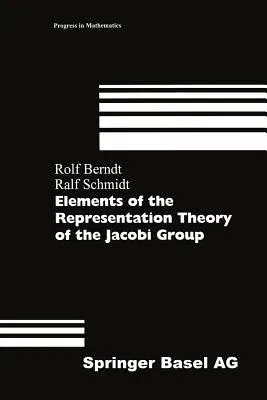Rolf Berndt
(Author)Elements of the Representation Theory of the Jacobi Group (1998)Paperback - 1998, 23 August 2014

Qty
1
Turbo
Ships in 2 - 3 days
In Stock
Free Delivery
Cash on Delivery
15 Days
Free Returns
Secure Checkout
Part of Series
Progress in Mathematics
Print Length
216 pages
Language
English
Publisher
Birkhauser
Date Published
23 Aug 2014
ISBN-10
3034897685
ISBN-13
9783034897686
Description
Product Details
Authors:
Book Edition:
1998
Book Format:
Paperback
Country of Origin:
NL
Date Published:
23 August 2014
Dimensions:
23.39 x
15.6 x
1.27 cm
ISBN-10:
3034897685
ISBN-13:
9783034897686
Language:
English
Location:
Basel
Pages:
216
Publisher:
Series:
Weight:
335.66 gm

